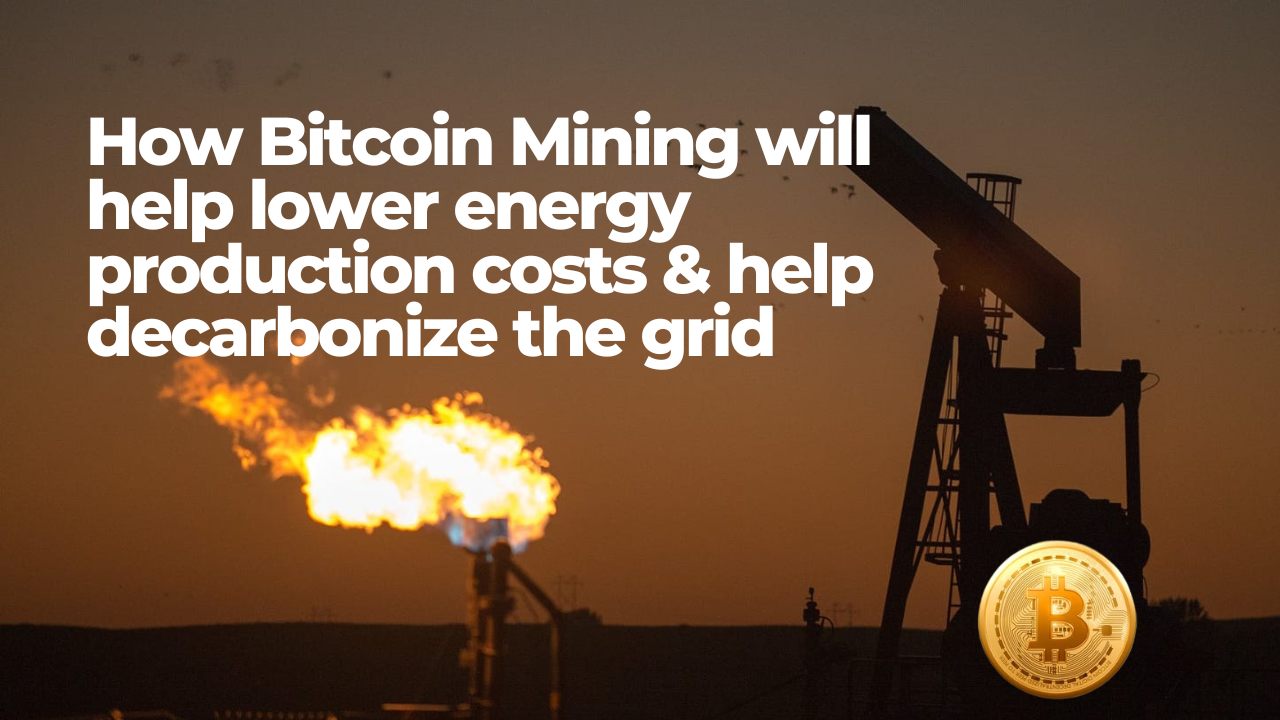When it comes to bitcoin mining, there’s a prominent narrative: it consumes more energy than many countries, emits carbon at astronomical rates, and threatens our environmental sustainability.
Despite these alarming statistics, I firmly believe in the potential of bitcoin mining to decarbonize the grid, reduce waste, and contribute positively to energy economics over the next 100 years.
Because bitcoin mining requires a lot of energy, it has become a magnet for criticism even when Bitcoin only uses .01% of the worlds energy produced.
However, one fundamental fact often overlooked is that bitcoin miners trend towards using the world’s cheapest electricity. As the major expense in mining, energy constitutes about 70% of the total cost.
Miners are constantly looking for ways to drive down these costs and increase their profit margins, leading them to seek the cheapest possible sources of energy.
Why would this matter?
Because the cheaper the energy, the less likely it is that it comes from carbon-intensive sources.
Cheap energy often originates from locations where it’s generated in abundance but underused due to the lack of demand or infrastructure to transmit it.
Examples include stranded assets like hydroelectric power in remote locations or surplus energy generated from wind or solar farms during peak production periods.
By tapping into these sources, bitcoin miners help put otherwise wasted energy to use.
Bitcoin Mining and Renewable Energy Integration
One of the great challenges of integrating renewable energy into the grid is the issue of intermittency.
Solar power is abundant during the day, while wind power can be unpredictable. Traditional energy grids are not designed to cope with the variability of renewable energy production.

However, bitcoin mining could serve as a buffer for this intermittency.
Bitcoin miners operate on a flexible schedule, ramping up operations when energy is abundant and cheap, and scaling down when it’s in short supply or too expensive.
This flexibility allows miners to absorb excess renewable energy when it’s available, effectively acting as a form of energy storage.
As renewable energy sources become increasingly dominant, this flexibility can contribute significantly to grid stability.

Waste Methane Mitigation and Heat Utilization
Another unique aspect of bitcoin mining is its potential for waste mitigation. Flared methane from oil fields, wastewater treatment facilities, farms, and landfills can be utilized to generate electricity and mine bitcoin.
Around 140 bcm of natural gas is flared globally each year. This is a major source of CO2 emissions, methane and black soot, and is damaging to health.

The UN has described methane mitigation as the most potent way to slow climate change over the next 25 years.
Here you can see a map of natural gas flaring sites that simply burn away this useable energy.

By tapping into this source of energy, bitcoin miners can play a role in reducing methane emissions.
There are many miners doing this today and many more coming online in the future.

In addition, all the energy consumed by an ASIC (the hardware used for bitcoin mining) is released as heat.
This heat can be harvested and repurposed for various uses, such as district heating farm buildings, barns, and other buildings.

A solution to bitcoin’s energy waste: Use it to warm buildings
The Greenhouse Project is growing veggies while mining Bitcoin that will provide the source of heat to the greenhouse.

Towards Cheaper, Cleaner Energy Production
With its capacity to tap into cheap, stranded energy sources, absorb excess renewable energy, mitigate methane emissions, and repurpose waste heat, bitcoin mining holds the potential to decarbonize the energy grid.
This vision is not without challenges.
Regulatory hurdles, market volatility, equipment shortages, and energy market manipulations can hinder progress not to mention the court of social justice which is controlled too much by the media’s false narratives.
These complications partially explain why, in the past few years, we’ve seen bitcoin mining strain local grids and prolong the lifespan of fossil fuel plants.
Despite these challenges, the fundamental economics of bitcoin mining point towards a relentless march towards nearly-free, unwanted energy.
As we move towards this future, it’s essential to have nuanced, informed discussions about the impacts of bitcoin mining on energy systems and the environment.
By doing so, we can better harness its potential for good and usher in an era of cheaper, cleaner energy production.
ON BITCOIN is a reader-supported publication. To receive new posts and support my work, consider becoming a free or paid subscriber.
